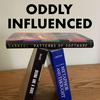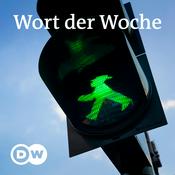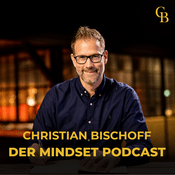55 Episoden

E52: Emotions as concepts
20.6.2025 | 33 Min.
An elaboration on episode 49's description of the brain as a prediction engine, focusing on a theory of what emotions are, how they're learned, and how emotional experiences are constructed. Emotions like anger and fear turn out to be not that different from concepts like money or bicycle, except that the brain attends more to internal sensations than to external perceptions. If the predictive brain theory is true, the brain is stranger than we imagine; perhaps stranger than we can imagine. Main sourcesLisa Feldman Barrett, "The theory of constructed emotion: an active inference account of interoception and categorization," Social Cognitive and Affective Neuroscience, 2017.Lisa Feldman Barrett, How Emotions Are Made: The Secret Life of the Brain, 2017.Andy Clark, The Experience Machine: How Our Minds Predict and Shape Reality, 2024.Other sources"... Chemero’s approach in his book Radical Embodied Cognitive Science (episode 43)...""... Clark suggests something like this in his 1997 book, Being There, covered in the unnumbered episode just before episode 41...""... Remember how, last episode, I distinctly remember driving seated on the left side of the car while in Ireland..."George A Miller, “The Magical Number Seven, Plus or Minus Two: Some Limits on our Capacity for Processing Information,” 1956. ("... replicating an experiment from 1949...")CreditsPicture of the University of Illinois Auditorium is from Vince Smith and is licensed CC BY 2.0. It was cropped.

E51: Constructed memories (a nugget)
08.6.2025 | 5 Min.
Memories appear to be constructed by plugging together stored templates. Do concepts operate the same way?SourcesSuzi Travis, "False Memories are Exactly What You Need", 2024.Lisa Feldman Barrett, "The theory of constructed emotion: an active inference account of interoception and categorization," Social Cognitive and Affective Neuroscience, 2017.CreditsImage of street warning from Dublin, Ireland, via Flickr user tunnelblick. Licensed Attribution-NonCommercial-ShareAlike 2.0 Generic.

E50: the preferred level of abstraction (a nugget)
07.6.2025 | 16 Min.
We see a creature near us, and we describe it as a dog. Why that and not "mammal" or "animal"? And if that dog's a Springer Spaniel, and we know it's a Springer Spaniel, why do we nevertheless call it a "dog"? In an apparent digression, I discuss the idea in cognitive science of a "basic level of categorization" (or abstraction). While we construct hierarchies and taxonomies, we tend to operate at one specific level: one that's not too abstract and not too concrete. SourcesGeorge Lakoff, Women, Fire, and Dangerous Things: What Categories Reveal about the Mind, 1987.Gregory L. Murphy, The Big Book of Concepts, 2002.Daniel Kahneman, Thinking, Fast and Slow, 2024. CreditsThe image of the dog and cat is via https://fondosymas.blogspot.com. It is licensed as Reconocimiento-NoComercial-CompartirIgual 3.0 España.

E49: Metaphors and the predictive brain
20.5.2025 | 19 Min.
It's fairly pointless to analyze metaphors in isolation. They're used in a cumulative way as part of real or imagined conversations. That meshes with a newish way of understanding the brain: as largely a prediction engine. If that's true, what would it mean for metaphorical names in code?Sources* Lisa Feldman Barrett, "The theory of constructed emotion: an active inference account of interoception and categorization," Social Cognitive and Affective Neuroscience, 2017. (I also read her How Emotions Are Made: The Secret Life of the Brain (2017) but found the lack of detail frustrating.)* Andy Clark, Being There: Putting Brain, Body, and World Together Again, 1997. CreditsImage of a glider under tow from zenithair.net.

E48: Multiple metaphors
16.5.2025 | 27 Min.
When we name a class name `Invoice`, are we communicating or thinking metaphorically? I used to think we were; now I think we aren't. This episode explains one reason: ordinary conversation frequently uses multiple metaphors when talking about some concept. Sometimes we even mix inconsistent or contradictory metaphors within the same sentence. That's not the way we use metaphorical names in programming.SourcesLakoff and Johnson, Metaphors We Live By, 1980. (I worked from the first edition; there is a second edition I haven't read.)Andy Clark, Being There: Putting Brain, Body, and World Together Again, 1997. Lisa Feldman Barrett, "The theory of constructed emotion: an active inference account of interoception and categorization," Social Cognitive and Affective Neuroscience, 2017.CreditsPicture of cats-eye marbles from Bulbapedia, the community-driven Pokémon encyclopedia.
Weitere Bildung Podcasts
Trending Bildung Podcasts
Über Oddly Influenced
Höre Oddly Influenced, Quarks Science Cops und viele andere Podcasts aus aller Welt mit der radio.at-App

Hol dir die kostenlose radio.at App
- Sender und Podcasts favorisieren
- Streamen via Wifi oder Bluetooth
- Unterstützt Carplay & Android Auto
- viele weitere App Funktionen
Hol dir die kostenlose radio.at App
- Sender und Podcasts favorisieren
- Streamen via Wifi oder Bluetooth
- Unterstützt Carplay & Android Auto
- viele weitere App Funktionen


Oddly Influenced
App laden,
loshören.



































